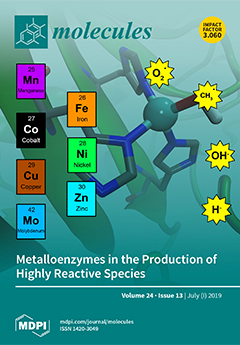Recently, we have found that calcium binding proteins of the EF-hand superfamily (i.e., a large family of proteins containing helix-loop-helix calcium binding motif or EF-hand) contain two types of conserved clusters called cluster I (‘black’ cluster) and cluster II (‘grey’ cluster), which provide a supporting scaffold for the Ca
2+ binding loops and contribute to the hydrophobic core of the EF-hand domains. Cluster I is more conservative and mostly incorporates aromatic amino acids, whereas cluster II includes a mix of aromatic, hydrophobic, and polar amino acids of different sizes. Recoverin is EF-hand Ca
2+-binding protein containing two ‘black’ clusters comprised of F35, F83, Y86 (N-terminal domain) and F106, E169, F172 (C-terminal domain) as well as two ‘gray’ clusters comprised of F70, Q46, F49 (N-terminal domain) and W156, K119, V122 (C-terminal domain). To understand a role of these residues in structure and function of human recoverin, we sequentially substituted them for alanine and studied the resulting mutants by a set of biophysical methods. Under metal-free conditions, the ‘black’ clusters mutants (except for F35A and E169A) were characterized by an increase in the α-helical content, whereas the ‘gray’ cluster mutants (except for K119A) exhibited the opposite behavior. By contrast, in Ca
2+-loaded mutants the α-helical content was always elevated. In the absence of calcium, the substitutions only slightly affected multimerization of recoverin regardless of their localization (except for K119A). Meanwhile, in the presence of calcium mutations in N-terminal domain of the protein significantly suppressed this process, indicating that surface properties of Ca
2+-bound recoverin are highly affected by N-terminal cluster residues. The substitutions in C-terminal clusters generally reduced thermal stability of recoverin with F172A (‘black’ cluster) as well as W156A and K119A (‘gray’ cluster) being the most efficacious in this respect. In contrast, the mutations in the N-terminal clusters caused less pronounced differently directed changes in thermal stability of the protein. The substitutions of F172, W156, and K119 in C-terminal domain of recoverin together with substitution of Q46 in its N-terminal domain provoked significant but diverse changes in free energy associated with Ca
2+ binding to the protein: the mutant K119A demonstrated significantly improved calcium binding, whereas F172A and W156A showed decrease in the calcium affinity and Q46A exhibited no ion coordination in one of the Ca
2+-binding sites. The most of the N-terminal clusters mutations suppressed membrane binding of recoverin and its inhibitory activity towards rhodopsin kinase (GRK1). Surprisingly, the mutant W156A aberrantly activated rhodopsin phosphorylation regardless of the presence of calcium. Taken together, these data confirm the scaffolding function of several cluster-forming residues and point to their critical role in supporting physiological activity of recoverin.
Full article






